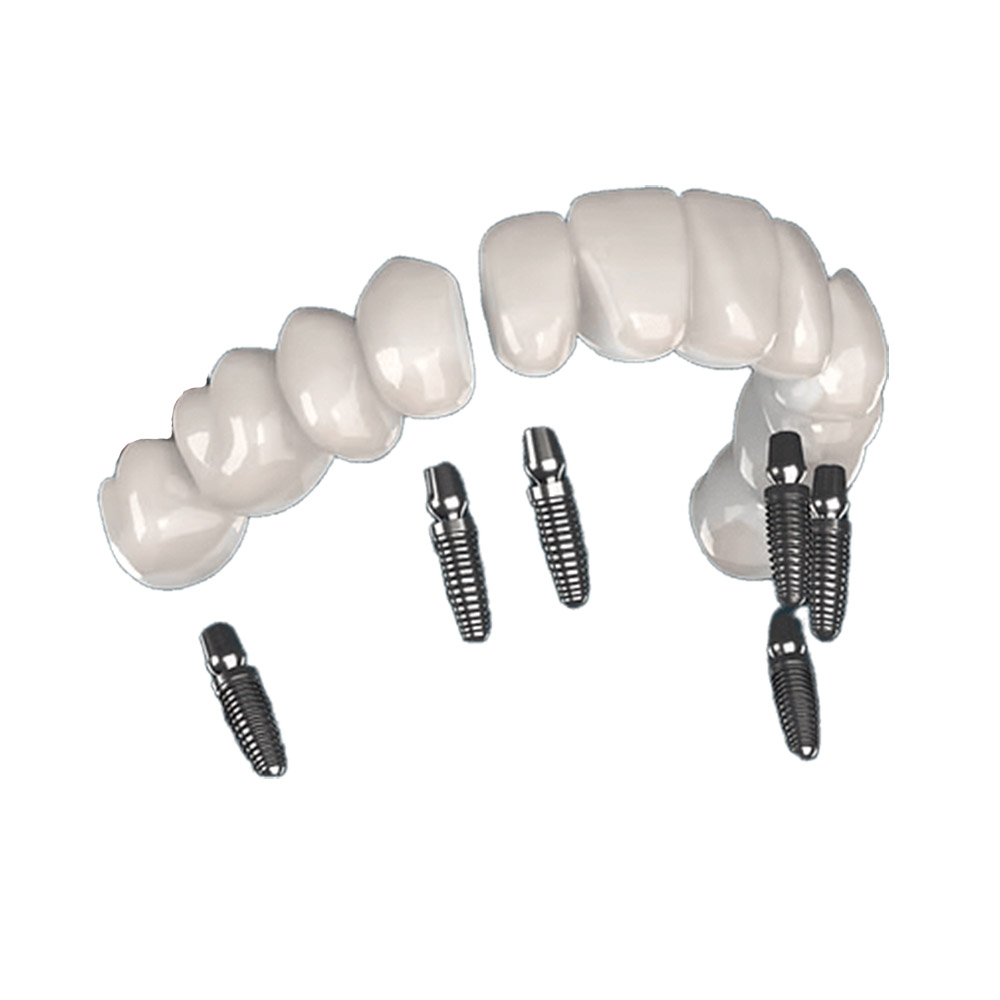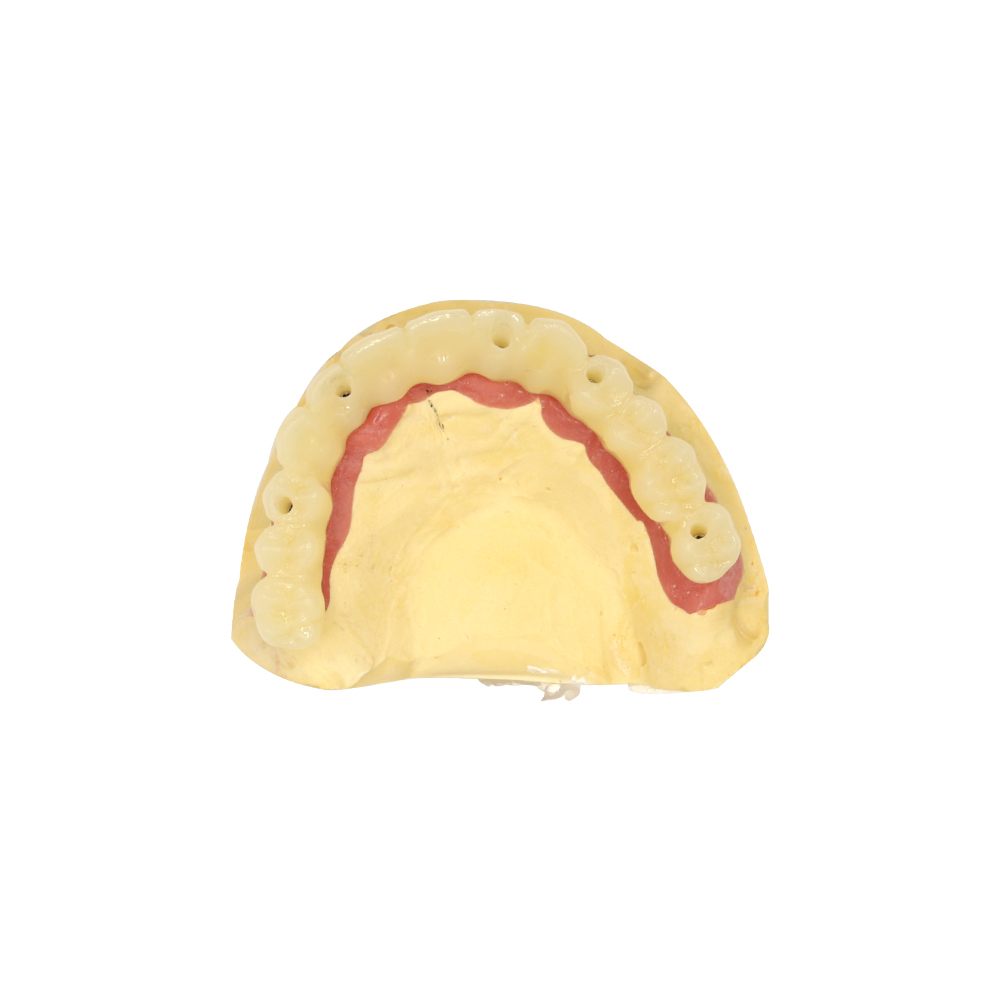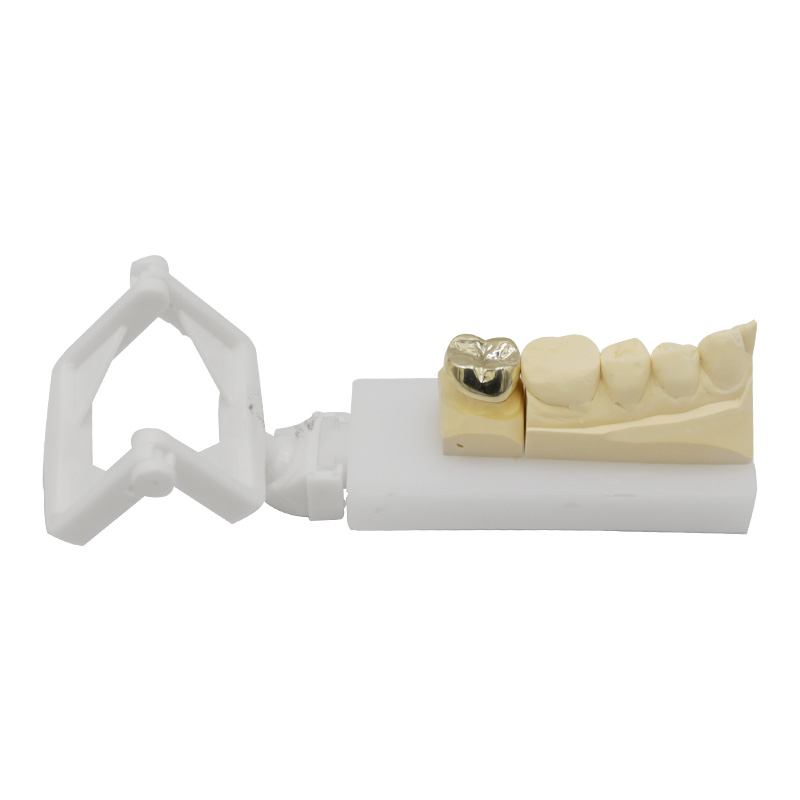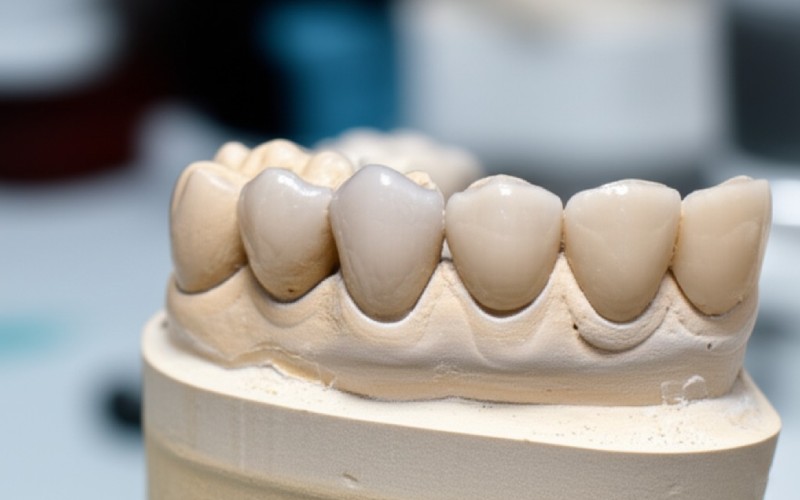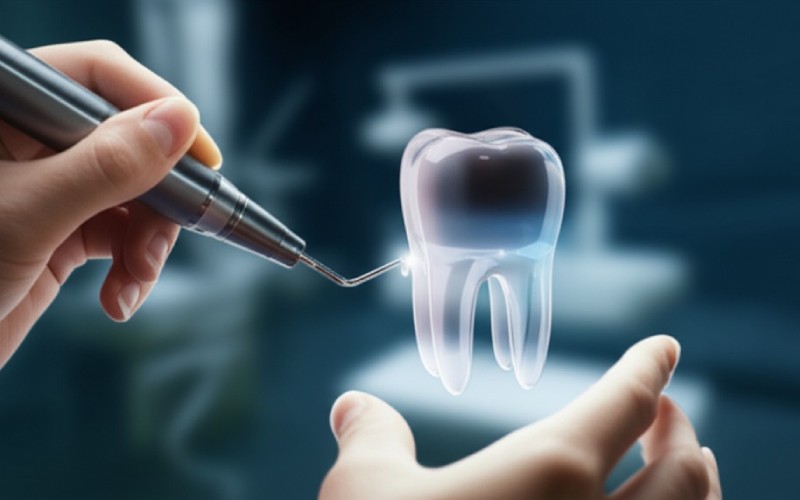Upper/Lower Dental Implants
Work With Istar for Great Upper and Lower Dental Implants
Our professional dental lab service is for experienced Dentists and Dental specialists. We make top-quality parts for Upper/Lower Dental Implants. We help you give your patients the gift of a new smile. Our team focuses on making perfect parts for upper dental implants. We are also experts in parts for lower dental implants. We believe in talking clearly and professionally with our partners.
Advanced Procedures We Support
Our lab is experienced in making special parts for all kinds of modern dental implant surgery. We help you provide great care.
Dental implants are very flexible and can be used for many different repair solutions, from replacing one tooth to fixing a whole row of teeth. Our lab is great at making dental replacements for all types of cases, making sure they work well and look good.
Single Unit and Fixed Partial Dentures For single tooth replacements or fixed partial dentures, implant-supported crowns and bridges offer better stability and protect the teeth next to them compared to older options that are supported by teeth. Choosing the right material and design is very important for long-term success, keeping in mind biting forces and how they need to look.
Full Arch Solutions: All-on-4/6 and Conventional Fixed Prostheses Fixing a full row of teeth with implants is a big step forward for patients with no teeth or with teeth that cannot be saved. The “All-on-4” idea uses four carefully placed implants (often with tilted back implants), which lets you put on new teeth right away without needing bone grafts. This is especially helpful when there is a medium to large amount of bone loss in the back of the jaw.
Here are some other procedures we support:
- All-on-8 dental implants
- Teeth in a day (also called same day dental implants)
- Implant-supported dentures
- Specialty Zygomatic implants
- Both Endosteal implants (placed in the bone) and Subperiosteal implants (placed on the bone)
We work with you through the whole treatment process. We help you plan for taking out teeth and getting the jawbone ready. We use your exact plans for putting in the implant and the abutment. Our lab makes the temporary teeth for the healing time. Then, we make the beautiful final set of teeth to be put in place.
Top Quality Materials and Parts
The best results come from the best materials. We use them to help the implant and bone grow together. This key process is called Osseointegration. Using good parts helps prevent implant problems. Our work on upper dental implants uses only the best.
| Material or Component | Why It’s Great for Upper/Lower Dental Implants |
| Dental crowns & Dental bridges | We make custom teeth that fit perfectly on the implants. |
| Porcelain teeth & Acrylic teeth | These artificial teeth look just like natural teeth. You can choose the best look and feel for your patient. |
| Denture Options | We create every type, including the screw-retained denture, bar attachment denture, and ball attachment denture. |
| Abutments & Implant posts | These are the small connectors that link the implant to the new tooth. They are vital for a good fit. |
| Hybrid arch | A strong, one-piece set of teeth for a full arch. It offers great strength. |
Amazing Results You Can Offer Patients
When you work with our lab for lower dental implants, you can offer your patients results that change their lives.
Key benefits include:
- Better chewing and a stronger bite
- Clearer speech
- Keeps the jawbone from shrinking to maintain face shape
- Supports the shape of the face
- A long-lasting fix that is very strong
- A big boost in confidence
- Very stable and comfortable, so no need for denture glue
How We Help You Reduce Risks
We know there are risks with implant surgery. Problems like infection, peri-implantitis, or nerve damage are serious. A poor fit can cause bone loss around the implant, an implant fracture, or loosening of the implant.
Our lab’s careful work helps you prevent these problems. We help stop implants from being in the wrong spot by following your plan exactly.
- We use your CT scan, 3D Imaging, and Digital X-rays data.
- Our digital scanning process creates a perfect fit for the final set of teeth.
- This careful work helps prevent shrinking gums and sinus problems.
- We help you plan for any patient allergic reaction to materials.
Working Together on Cost and Treatment Plans
We know the cost of full mouth dental implants is important. We work with you to offer dental implant options that are easier to afford for your practice. We can give you clear pricing for the cost of All-on-4 implants, the cost of upper arch implants, and the cost of lower arch implants. This helps you talk with patients about payment plans and insurance for dental implants. We can even help price parts for a single tooth implant.
Your Patient and Your Plan
Who is a good fit for dental implants? It is usually someone with a good check-up of their mouth. They need good bone density and gum health. Their overall health is also important. You need to be careful with conditions like diabetes or habits like smoking.
We work with your whole team on the treatment plan. We work closely with the Oral Surgeon, Prosthodontist, and Periodontist.
Your work begins when you talk with the patient.
While the basic ideas of Osseointegration are the same for everyone, the differences in the body’s structure and function between the upper and lower jaw arches mean that we need different ways to plan and do the treatment.
The lower jaw (mandible) usually has denser bone, typically called D1-D2 bone, which has a thick outer layer (cortical plate) and less spongy bone inside (cancellous bone). This strong bone quality, especially in the front area, often helps the implant be more stable at the start and makes Osseointegration more reliable. On the other hand, the upper jaw (maxilla) is mostly made of less dense D3-D4 bone, with a thinner outer layer (cortical plate) and a more holey, spongy structure. This natural difference directly affects how stable the implant is at first and the success rates of Osseointegration. Studies regularly show that implants last longer in the lower jaw (mandible) (up to 95-98% at 10 years) compared to the upper jaw (maxilla) (85-90%).
Also, the blood supply in the two jaw arches is very different. The upper jaw has more blood vessels, which can help with healing and Osseointegration but also means there is a higher risk of bleeding during surgery. The lower jaw, with its lower blood supply, especially in the back areas, may heal more slowly. Important nerves and blood vessels also create special challenges: the inferior alveolar nerve and mental foramen in the lower jaw, and the nasopalatine canal and greater palatine foramen in the upper jaw.
A key structural feature of the back of the upper jaw is the maxillary sinus and how much air it holds, which can change. This often reduces the amount of available bone height, which often means a sinus floor elevation procedure is needed. This type of bone-adding procedure is much more common in the upper jaw than in the lower jaw, which shows a key difference in planning the surgery.
- We use your plan to create the perfect parts for the full arch of teeth.
- We provide information to help you explain aftercare, recovery time, and the right diet after implant surgery to your patients.
Why Choose Our Lab?
We care about great looks and how well things work. We know the success rate of dental implants is what matters most. The upper implant success rate and lower implant success rate depend on the clinic and the lab working well together. We promise to be a great partner.
From the upper jaw (Maxilla) to the lower jaw (Mandible), we are here to help with your work on Upper/Lower Dental Implants.






